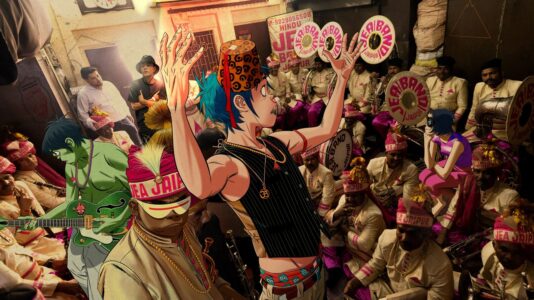Tencent Launches Voyager: A New Frontier in Automated Video Generation
Tencent has unveiled its latest advancement in automated video creation, the Voyager model, which builds upon the foundational work established by the company’s prior release, HunyuanWorld 1.0. This initiative is part of Tencent’s expansive "Hunyuan" ecosystem, which also includes models like Hunyuan3D-2 for text-to-3D generation and HunyuanVideo for video synthesis.
Innovations in Training and Technology
The development of Voyager marks a significant leap in how video content is generated. Utilizing advanced software, the model automatically analyzes existing footage to process camera movements and calculate depth for each frame. This automation frees researchers from the arduous task of manually labeling thousands of hours of video. In total, Voyager has processed over 100,000 video clips drawn fromリアウworld recordings as well as Unreal Engine renders, enhancing its capacity for realistic content generation.
Image Credit: Tencent
System Requirements and Accessibility
Running the Voyager model demands significant computational resources. To achieve 540p resolution, it requires a minimum of 60GB of GPU memory, with 80GB recommended for optimal performance. Tencent has made the model weights publicly available on Hugging Face, along with code that accommodates both single and multi-GPU configurations.
However, it’s important to note that licensing restrictions apply. The usage of Voyager is prohibited in regions such as the European Union, the United Kingdom, and South Korea. Furthermore, for commercial implementations serving over 100 million monthly active users, entities must secure a separate licensing agreement from Tencent.
Competitive Performance Metrics
Voyager has distinguished itself in benchmarking tests, achieving a remarkable overall score of 77.62 on the WorldScore benchmark established by Stanford University researchers. This score puts Voyager ahead of its competitors, including WonderWorld at 72.69 and CogVideoX-I2V at 62.15. Specific metrics reveal that Voyager excels in several areas: it received scores of 66.92 for object control, 84.89 for style consistency, and 71.09 for subjective quality. Its only shortcoming was in camera control, where it garnered 85.95, falling behind WonderWorld’s impressive 92.98.
Computational Challenges Ahead
Despite Voyager’s promising capabilities, challenges remain in its broader deployment due to the substantial computational requirements it entails. For developers seeking to expedite processing, the system allows for parallel inference across multiple GPUs, significantly boosting performance; running on eight GPUs can achieve speeds 6.69 times faster than a single GPU setup.
Future Prospects and Potential Impact
The sophistication of Voyager showcases a burgeoning era in interactive video generation. However, users may need patience, as the technology still faces limitations, especially in producing long, coherent "worlds." Experts suggest that while current capabilities are impressive, further advancements will be necessary before real-time interactive experiences become commonplace.
As the field of generative video continues to evolve, it’s clear that innovations like Voyager and other similar technologies may pave the way for a new form of interactive, generative art. As we explore the applications and implications of such tools, the potential impact on industries ranging from gaming to virtual reality is significant, highlighting the ongoing convergence of art and technology.









